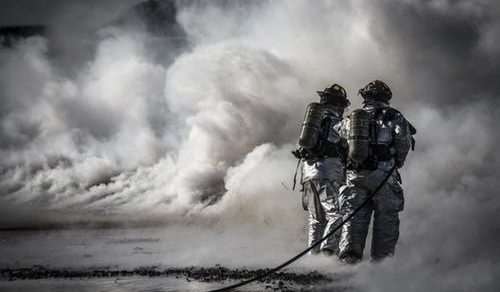What Is the Process Behind Effective Fire Damage Cleaning?
Fire damage is a destructive force that leaves homeowners in a state of distress. The shocking aftermath can seem overwhelming, turning once familiar spaces into unrecognizable ruins. Fire restoration, however, can bring hope amidst despair, offering a path toward full recovery.
This process involves meticulous planning and various damage prevention techniques and employs certified professionals to ensure adequate repair and rejuvenation of your property, bringing it back to its original state.
Read on to learn more.
Identifying the Damage
The initial phase of fire restoration involves recognizing and evaluating the extent of the damage caused by the fire. This step is vital to formulating an efficient inspection strategy to restore the property. Two main tasks come under this phase – damage assessment and property securing.
1. Fire Damage Assessment
The process of damage assessment is an intricate part of post-fire recovery. It lays the groundwork for the entire fire restoration process.
Here’s how it’s done:
- Meticulous Inspection: Certified fire restoration professionals use their expertise to examine the damage thoroughly. They inspect every corner of the property to get a comprehensive view of the situation.
- Identifying Visible and Hidden Damages: Professionals don’t just focus on visible damages; they also look for hidden issues. This could include structural weaknesses or potential risks that aren’t immediately noticeable.
- Recording Particular Damages: The assessment process also involves documentation of specific damages. High on the priority list are discoloration of walls and ceilings, charring, and lingering smoke odors.
2. Post-Fire Property Security
After assessing the damage, the initial step in the fire restoration process is securing the property. This task is significant to the restoration process and involves a few critical steps:
- Boarding Up: Windows, doors, and other openings are boarded up to prevent trespassing, theft, or animal intrusion.
- Property Protection: Securing the property isn’t solely about keeping unwanted guests out; it also helps shield the property against further damage. For instance, exposed parts of the house are covered to prevent damage from adverse weather conditions.
- Damage Mitigation: Securing the property can also control the spread of damage. By cordoning off the most severely affected areas, professionals can lower the risk of fire damage extending to other parts of the property.
Managing Further Complications
When dealing with fire damage, extinguishing the flame is the first step. After a fire is put out, multiple secondary issues must be handled.
1. Water Damage Stemming from Fire Extinguishing
The act of dousing a fire with water is a known necessity. However, this can ironically lead to further destruction of the property.
- Secondary Damage: Fires are typically put out with help from water, yet the resultant saturation can wreak havoc on the property structure and items within. Ironically, the element that prevents fire’s spread can add another dimension of damage to the restoration plan.
- Addressing the Issue: Recognizing the water problem, a proper drying and humidification process is expected to be initiated. The intent is to manage the potential for mold growth or structural instability due to prolonged water exposure.
- Mold Prevention: If left unchecked, the trapped moisture could encourage the growth of mold colonies which might lead to additional health hazards. Therefore, quickly removing excess water and efficient drying techniques are crucial to avoiding such risks.
2. Fire Damage Prevention Techniques
Preventing further damage after a fire incident is as crucial as dealing with the immediate aftermath. Several techniques are deployed by experts for this purpose.
- Electrical Hazards: Damaged electrical wires are potential hazards that could lead to another fire or accidents due to electrocution. Hence, they are disconnected early in the fire damage prevention phase.
- Water Drainage: Water from firefighting efforts is promptly drained, aiding in drying. This measure also helps prevent water-borne damage to the property’s structure and contents.
- Cleaning Techniques: After dealing with the immediate hazards, efforts for effective cleaning of fire-damaged property begin. Various strategies and tools are used, depending on the extent and nature of the damage.
Speaking of effective fire damage control, professionals like a fire restoration company in Innisfil provide an excellent example. They excel in combining damage control techniques and cleanup operations while ensuring all potential hazards are mitigated.
The Role of Fire and Smoke Damage Restoration Technicians
Fire and smoke damage restoration technicians act as the vanguards on the path to restoration. With their expertise, fire damage is thoroughly cleaned, the structure is stabilized, and a renovation plan is implemented. They aid in restoring normalcy by helping salvage personal items, extracting water, removing soot, and finally deodorizing the property.
Getting Rid of the Damage
1. Fire-Damaged Items Restoration
Fire-damaged items restoration involves deliberation on what can be saved and what needs to be discarded. Restoration technicians scrutinize every item, determining whether professional cleaning can restore them or if a replacement becomes necessary.
2. Demolition and Removal of Fire-Damaged Structures
Demolition and removal of fire-damaged structures often become necessary where the damage is intense. This is necessary to avoid dangerous collapses and facilitate the reconstruction process.
3. Soot and Smoke Stains Cleaning
Following demolition, soot and smoke stain cleaning becomes a priority. Palpable residue and odors are removed using specialty cleaning agents. Extensive scrubbing, sanitizing, and deodorizing are undertaken for smoke damage removal.
Effective Cleaning for Fire-Damaged Property
For a complete rejuvenation of the property, effective cleaning becomes crucial. This involves restoration of existing structures and cleaning all affected areas. Then, antimicrobial chemicals are used to prevent mold growth. Deodorizing after the fire is also essential to reclaim the living atmosphere.
One key aspect is the role played by emergency cleanup services, accustomed to property restoration tasks. Their knowledge and expertise accelerate the restoration process and ensure every corner of your property is cared for.
Reconstruction After Fire
The final step in the fire cleanup process includes reconstructing damaged structures. The restoration of the original state happens here. Damaged drywall is replaced, missing roof sections are refitted, and smoke-damaged walls are repainted. A roof tarp installation after a fire can also provide a temporary solution to weather damages until complete restoration is achieved.
Fire and Water Damage Restoration
A fire restoration process is a closed cycle that involves meticulous planning, execution, and evaluation. Fire recovery services pull together all utilities to provide a one-stop fire and water damage restoration solution. Furthermore, they strive to make the complex process smoother for those grappling with the aftermath of a fire incident.
Conclusion
While emotionally exhausting, the toll of fire damage doesn’t have to spell the end for your property. Harnessing the expertise of fire restoration services can ignite the beginning of a new chapter. From initial damage assessment to comprehensive reconstruction, every step brings you closer to restoring your treasured property. It may be a daunting journey, but remember that effective fire restoration is not just about repairing structures but also about rebuilding lives.



